Keeping mice out of your car is essential to prevent costly damage and maintain your vehicle’s integrity. CARS.EDU.VN offers practical solutions and in-depth advice to protect your car from rodent infestations. Explore effective mouse deterrents, learn preventative measures, and discover how to safeguard your car’s components.
1. Understanding the Threat: Why Mice Target Cars
Mice seek shelter, warmth, and food sources, making cars an attractive haven, especially during colder months. Understanding why they target vehicles is the first step in effective rodent control.
1.1. Ideal Shelter
Cars provide dark, enclosed spaces like engine bays and interiors that mimic natural burrows, offering protection from predators and harsh weather.
1.2. Warmth and Comfort
The residual heat from the engine makes cars an inviting refuge for mice, particularly in winter. Upholstery and insulation materials provide soft nesting grounds.
1.3. Food Sources
Even tiny crumbs of food left inside the car can attract mice. Additionally, some car components are made with organic materials that rodents find palatable.
1.4. Easy Access Points
Mice can squeeze through remarkably small openings to gain access to your vehicle’s interior and engine compartment.
1.5. Safety from Predators
Under the hood or inside the cabin, mice feel safe from cats, birds, and other predators that might hunt them in open environments.
2. Identifying the Signs of a Mouse Infestation
Recognizing early signs of mice in your car can help you take swift action and prevent extensive damage. Look out for these telltale indicators:
2.1. Droppings
Small, dark, and pellet-shaped droppings are a clear sign of mice. Check under the seats, in the glove compartment, and around the engine bay.
2.2. Nests
Mice build nests using shredded paper, fabric, and other soft materials. Look for these nests in hidden areas like the air vents or behind the dashboard.
2.3. Chewed Wires
Mice often gnaw on electrical wires, which can cause serious damage and pose a fire hazard. Inspect wires for signs of chewing or fraying.
2.4. Strange Noises
Listen for scratching or rustling sounds coming from inside the car, especially when it’s parked.
2.5. Unpleasant Odors
A musty or ammonia-like smell can indicate a mouse infestation, particularly if urine is present.
2.6. Food Debris
Finding small pieces of food or wrappers in unusual places suggests that mice are scavenging for food inside your car.
3. Comprehensive Mouse Prevention Strategies
Preventing mice from entering your car requires a multi-faceted approach, combining deterrents, physical barriers, and regular maintenance.
3.1. Seal Entry Points
Mice can squeeze through incredibly small openings. Inspect your car for any potential entry points and seal them with steel wool or caulk.
3.2. Keep Your Car Clean
Remove all food wrappers, crumbs, and other debris from your car’s interior. Regularly vacuum the seats and carpets to eliminate potential food sources.
3.3. Use Mouse Repellents
Several natural and commercial repellents can deter mice from entering your car. Consider using peppermint oil, mothballs, or electronic deterrents.
3.4. Park in Well-Lit Areas
Mice prefer dark, secluded areas. Parking your car in a well-lit area can make it less attractive to rodents.
3.5. Regular Maintenance
Regularly inspect your car for signs of mice and address any issues promptly. This includes checking the engine bay, interior, and undercarriage.
3.6. Protective Covers
If you store your car for extended periods, use a car cover to provide an additional barrier against mice and other pests.
4. Natural Mouse Deterrents: Harnessing the Power of Scents
Certain scents are known to repel mice, offering a natural and non-toxic way to keep them away from your car.
4.1. Peppermint Oil
Mice dislike the strong scent of peppermint. Soak cotton balls in peppermint oil and place them in various locations around your car, such as the engine bay, under the seats, and in the trunk.
4.2. Mothballs
Mothballs emit a strong odor that repels mice. Place mothballs in a sock or cheesecloth bag and hang them inside your car. Be cautious, as mothballs can be toxic and should be kept away from children and pets.
4.3. Bay Leaves
Bay leaves are another natural deterrent. Place bay leaves in areas where mice are likely to enter, such as the air vents and under the seats.
4.4. Cayenne Pepper
The spicy scent of cayenne pepper can irritate mice. Sprinkle cayenne pepper around the perimeter of your car or in areas where mice are likely to enter.
4.5. Essential Oil Blend
Create a blend of essential oils known to repel mice, such as peppermint, eucalyptus, and citronella. Add the blend to a diffuser or spray bottle and apply it to your car’s interior and engine bay.
5. Commercial Mouse Repellents: Effective Products for Car Protection
Numerous commercial mouse repellents are available, offering varying levels of effectiveness and convenience.
5.1. Ultrasonic Repellents
These devices emit high-frequency sounds that are unpleasant to mice but inaudible to humans. Place ultrasonic repellents inside your car to deter mice.
5.2. Scent-Based Repellents
These repellents use strong odors that mice find offensive. They come in various forms, such as sprays, granules, and sachets.
5.3. Electronic Traps
Electronic traps deliver a high-voltage shock to kill mice quickly and humanely. Place these traps in areas where mice are likely to travel.
5.4. Sticky Traps
Sticky traps capture mice when they walk across the adhesive surface. While effective, they can be inhumane if mice are left to suffer for extended periods.
5.5. Bait Stations
Bait stations contain poisoned bait that attracts mice. These stations should be used with caution, as they can be harmful to pets and children.
6. Physical Barriers: Blocking Mouse Access to Your Car
Creating physical barriers can prevent mice from entering your car and causing damage.
6.1. Steel Wool
Stuff steel wool into any openings or cracks in your car’s body or undercarriage. Mice cannot chew through steel wool, making it an effective barrier.
6.2. Wire Mesh
Cover air intakes and other entry points with wire mesh to prevent mice from entering.
6.3. Car Covers
Use a car cover to protect your vehicle from mice and other pests, especially if you store it for extended periods.
6.4. Garage Door Seals
Ensure that your garage door seals tightly to prevent mice from entering the garage where your car is parked.
6.5. Elevated Parking
Parking your car on an elevated platform or lift can make it more difficult for mice to access.
7. Addressing Existing Mouse Infestations: Removal and Cleanup
If mice have already infested your car, it’s essential to remove them and clean up any mess they’ve left behind.
7.1. Trapping
Use mouse traps to capture and remove the mice from your car. Place traps in areas where you’ve seen signs of activity.
7.2. Vacuuming
Thoroughly vacuum the car’s interior, including the seats, carpets, and trunk, to remove droppings, nests, and other debris.
7.3. Disinfecting
Disinfect all surfaces that may have been contaminated by mice, using a solution of bleach and water.
7.4. Air Purification
Use an air purifier to remove any lingering odors and allergens from the car’s interior.
7.5. Professional Cleaning
Consider hiring a professional cleaning service to thoroughly clean and disinfect your car, especially if the infestation was severe.
8. Protecting Your Car’s Engine Bay: A High-Risk Zone
The engine bay is a prime target for mice due to its warmth and sheltered environment. Here’s how to protect it:
8.1. Regular Inspection
Regularly inspect the engine bay for signs of mice, such as droppings, nests, and chewed wires.
8.2. Wire Protection
Wrap vulnerable wires with rodent-resistant tape or sleeves to prevent mice from chewing on them.
8.3. Engine Bay Cleaning
Keep the engine bay clean and free of food debris. Use a degreaser to remove any grease or oil that may attract mice.
8.4. Peppermint Oil Application
Place cotton balls soaked in peppermint oil around the engine bay to deter mice.
8.5. Cap Openings
Cover any openings in the engine bay with wire mesh or steel wool to prevent mice from entering.
9. Safeguarding Your Car’s Interior: Preventing Nesting
Mice often build nests inside car interiors, causing damage to upholstery and creating unpleasant odors.
9.1. Interior Cleaning
Regularly clean the car’s interior, removing any food crumbs or debris that may attract mice.
9.2. Vacuuming Vents
Vacuum the air vents to remove any nesting materials or droppings that may be present.
9.3. Peppermint Oil Placement
Place cotton balls soaked in peppermint oil under the seats and in the glove compartment to deter mice.
9.4. Dryer Sheets
Place dryer sheets under the seats to repel mice with their scent.
9.5. Cabin Filter Replacement
Regularly replace the cabin air filter to prevent mice from nesting in the filter housing.
10. Long-Term Car Storage: Extra Protection Measures
If you plan to store your car for an extended period, take extra precautions to protect it from mice.
10.1. Comprehensive Cleaning
Thoroughly clean the car’s interior and exterior before storing it.
10.2. Seal Entry Points
Seal all potential entry points with steel wool or caulk.
10.3. Car Cover Use
Use a car cover to provide an additional barrier against mice and other pests.
10.4. Repellent Placement
Place multiple mouse repellents inside the car, such as peppermint oil, mothballs, or electronic deterrents.
10.5. Regular Monitoring
Check on the car periodically to ensure that mice have not gained access.
11. Professional Pest Control: When to Call the Experts
In some cases, dealing with a mouse infestation may require professional assistance.
11.1. Severe Infestations
If the mouse infestation is severe, it may be necessary to call a professional pest control service.
11.2. Persistent Problems
If you’ve tried various DIY methods without success, a professional can provide more effective solutions.
11.3. Extensive Damage
If mice have caused significant damage to your car, a professional can assess the damage and recommend appropriate repairs.
11.4. Health Concerns
If you have health concerns related to mouse infestations, such as allergies or asthma, a professional can provide safe and effective removal services.
11.5. Prevention Advice
A pest control professional can offer valuable advice on preventing future mouse infestations.
12. Understanding the Role of Car Insurance
Car insurance may cover some of the damage caused by mice, depending on your policy and the extent of the damage.
12.1. Comprehensive Coverage
Comprehensive car insurance policies typically cover damage caused by rodents, including chewed wires and upholstery damage.
12.2. Policy Review
Review your car insurance policy to understand the extent of your coverage for rodent damage.
12.3. Claim Filing
If mice have caused significant damage to your car, file a claim with your insurance company.
12.4. Documentation
Document the damage caused by mice with photographs and detailed descriptions.
12.5. Repair Estimates
Obtain repair estimates from qualified mechanics to provide to your insurance company.
13. Debunking Common Myths About Mouse Control
Many misconceptions exist regarding mouse control. Separating fact from fiction is essential for effective prevention and removal.
13.1. Myth: Cheese is the Best Bait
While mice are often depicted as loving cheese, they are more attracted to sweet and protein-rich foods like peanut butter and grains.
13.2. Myth: One Mouse Means Only One Mouse
Mice reproduce quickly, so if you see one mouse, there are likely more hiding nearby.
13.3. Myth: Ultrasonic Devices Always Work
While some ultrasonic devices may deter mice, their effectiveness can vary, and they are not always a reliable solution.
13.4. Myth: Cats Always Catch Mice
While cats can be effective mouse hunters, not all cats are interested in hunting, and some mice may be able to evade them.
13.5. Myth: Mothballs are a Safe Solution
Mothballs contain toxic chemicals and should be used with caution, especially around children and pets.
14. Eco-Friendly Mouse Control Options
For those seeking environmentally responsible solutions, several eco-friendly mouse control options are available.
14.1. Live Traps
Live traps capture mice without harming them, allowing you to release them in a remote location.
14.2. Natural Repellents
Use natural repellents like peppermint oil, bay leaves, and cayenne pepper to deter mice.
14.3. Organic Baits
Choose organic baits that are less harmful to the environment and non-target animals.
14.4. Plant-Based Deterrents
Use plant-based deterrents like rosemary and lavender to repel mice.
14.5. Exclusion Techniques
Focus on exclusion techniques like sealing entry points and using physical barriers to prevent mice from entering your car.
15. Preventative Maintenance Checklist for Mouse Control
A regular preventative maintenance checklist can help you keep mice away from your car.
15.1. Monthly Cleaning
Clean the car’s interior and exterior monthly to remove food debris and other attractants.
15.2. Quarterly Inspection
Inspect the engine bay and undercarriage quarterly for signs of mice.
15.3. Semi-Annual Repellent Application
Apply mouse repellents semi-annually to maintain their effectiveness.
15.4. Annual Sealing
Seal any new entry points annually to prevent mice from gaining access.
15.5. Seasonal Adjustments
Adjust your mouse control strategies seasonally to address changes in rodent behavior.
16. The Role of Your Garage Environment
Your garage environment plays a significant role in attracting or deterring mice.
16.1. Garage Cleanliness
Keep your garage clean and free of clutter to eliminate potential nesting sites for mice.
16.2. Food Storage
Store food in airtight containers to prevent mice from accessing it.
16.3. Seal Entry Points
Seal any cracks or openings in the garage walls and foundation.
16.4. Garage Door Maintenance
Ensure that your garage door seals tightly to prevent mice from entering.
16.5. Landscaping
Keep vegetation around the garage trimmed to reduce hiding places for mice.
17. Understanding Mouse Behavior: Habits and Patterns
Understanding mouse behavior can help you develop more effective control strategies.
17.1. Nocturnal Activity
Mice are most active at night, so focus your control efforts during these hours.
17.2. Nesting Preferences
Mice prefer to nest in dark, secluded areas with access to food and water.
17.3. Travel Routes
Mice tend to follow established travel routes, so place traps and repellents along these paths.
17.4. Communication
Mice communicate through scent markings, so cleaning these markings can help deter other mice.
17.5. Breeding Habits
Mice breed rapidly, so prompt action is essential to prevent a large infestation.
18. The Impact of Climate on Mouse Activity
Climate plays a significant role in mouse activity, influencing their behavior and habitat preferences.
18.1. Cold Weather
Mice seek shelter indoors during cold weather, making cars and garages prime targets.
18.2. Warm Weather
Mice may be more active outdoors during warm weather, but they can still infest cars in search of food and water.
18.3. Seasonal Strategies
Adjust your mouse control strategies seasonally to address changes in rodent behavior.
18.4. Regional Variations
Mouse behavior can vary depending on the region, so adapt your strategies accordingly.
18.5. Weatherproofing
Weatherproof your car and garage to prevent mice from entering during extreme weather conditions.
19. Real-Life Case Studies: Successful Mouse Control Strategies
Examining real-life case studies can provide valuable insights into successful mouse control strategies.
19.1. Case Study 1: Peppermint Oil Success
A car owner successfully deterred mice by placing cotton balls soaked in peppermint oil around the engine bay and interior.
19.2. Case Study 2: Steel Wool Barrier
A garage owner prevented mice from entering by sealing all entry points with steel wool.
19.3. Case Study 3: Ultrasonic Repellent Effectiveness
A car owner used an ultrasonic repellent to successfully deter mice from nesting in the car’s interior.
19.4. Case Study 4: Professional Pest Control Triumph
A homeowner hired a professional pest control service to eliminate a severe mouse infestation in their garage.
19.5. Case Study 5: Comprehensive Approach Victory
A car owner combined multiple strategies, including cleaning, sealing, and repellent use, to successfully control mice.
20. Resources and Tools for Mouse Prevention
Several resources and tools can aid in preventing mice from infesting your car.
| Resource/Tool | Description | Benefits |
|---|---|---|
| Peppermint Oil | Natural repellent with a strong scent that deters mice. | Safe, non-toxic, and easy to use. |
| Steel Wool | Material used to seal entry points, preventing mice from entering. | Effective physical barrier. |
| Ultrasonic Repellents | Devices emitting high-frequency sounds unpleasant to mice. | Non-toxic and easy to install. |
| Car Covers | Protective covers for cars stored for extended periods. | Provides a physical barrier against mice and other pests. |
| Pest Control Services | Professional services for severe infestations. | Effective and comprehensive solutions. |
| Rodent-Resistant Tape | Tape designed to protect wires from being chewed by rodents. | Prevents damage to critical car components. |
| Live Traps | Traps that capture mice without harming them, allowing for release in a remote location. | Humane and eco-friendly. |
| Inspection Cameras | Small cameras used to inspect hard-to-reach areas for signs of mouse activity. | Helps identify infestations early. |
| Cleaning Supplies | Supplies for cleaning car interiors and exteriors to remove food debris and attractants. | Keeps the car environment uninviting for mice. |
| Educational Resources (CARS.EDU.VN) | Websites and guides providing information on mouse prevention. | Provides detailed knowledge and best practices. |
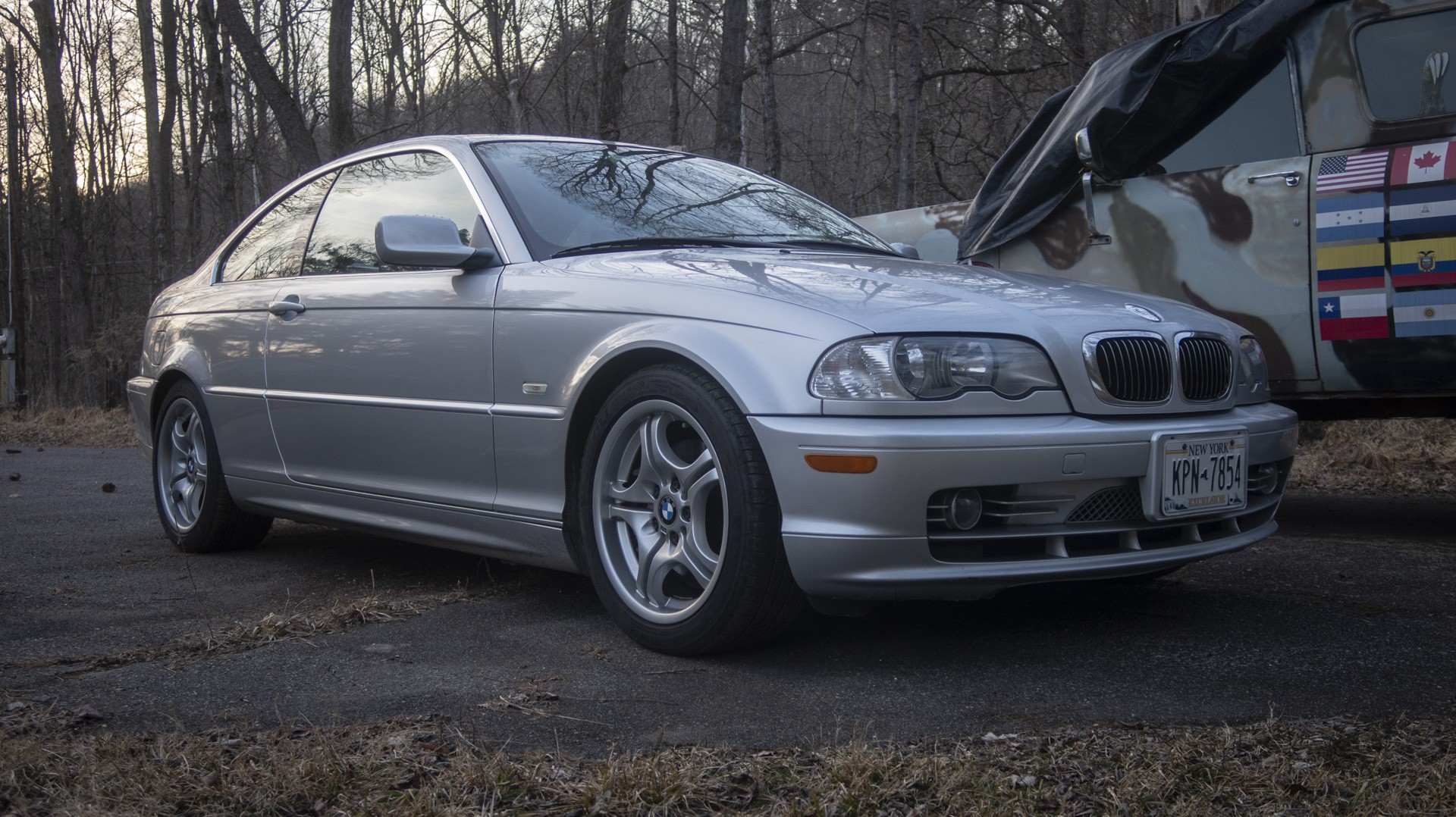

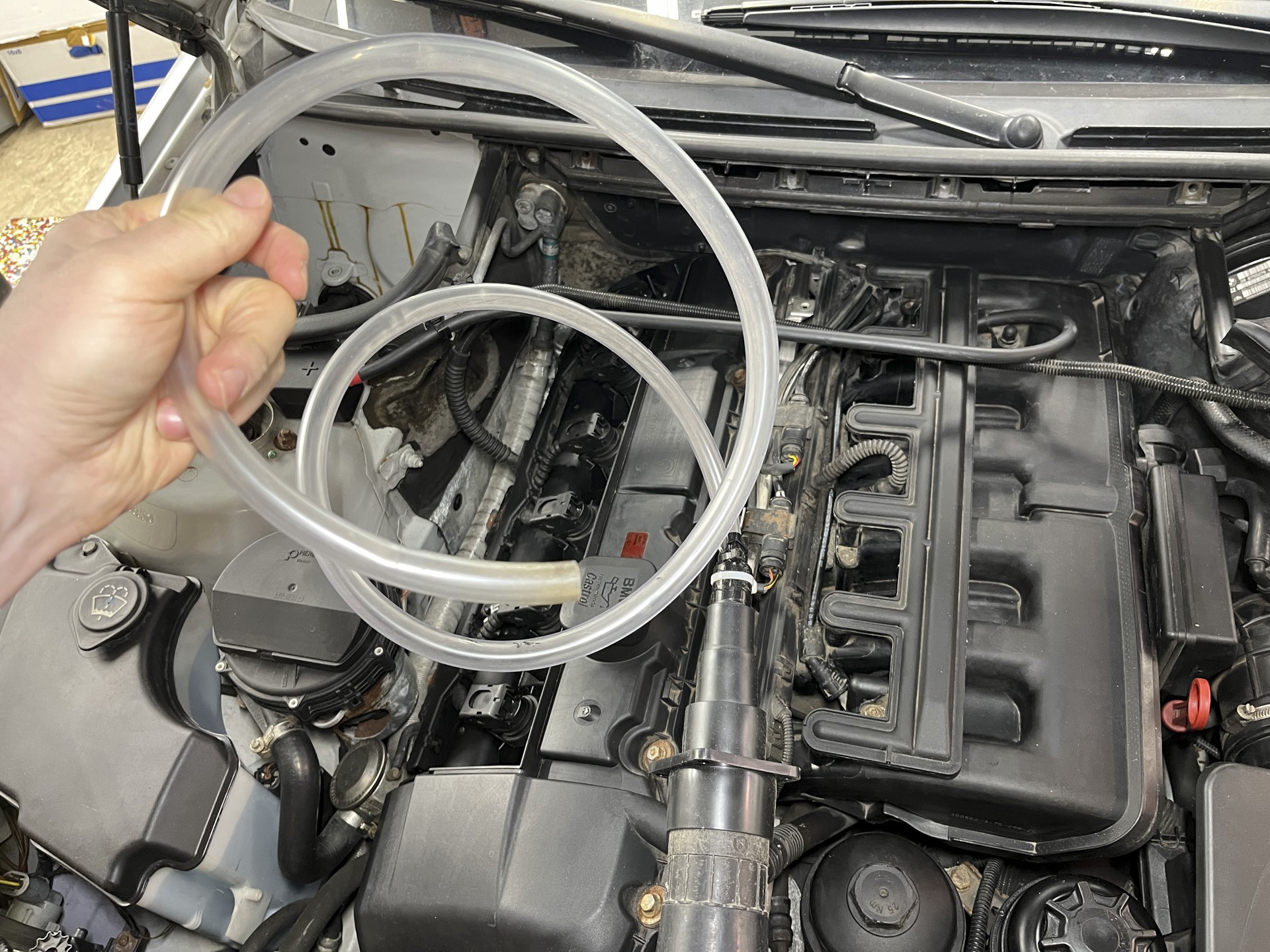
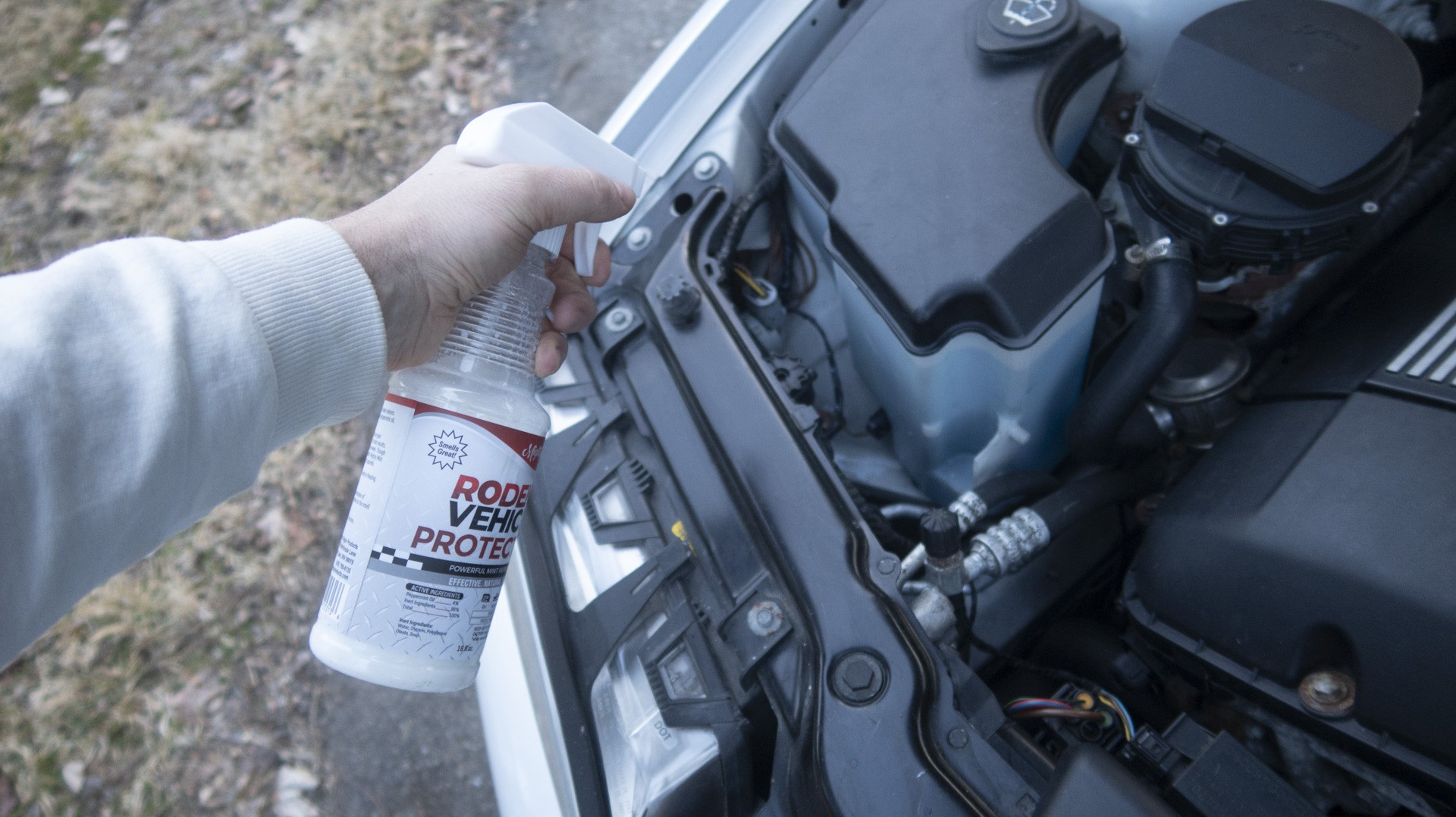
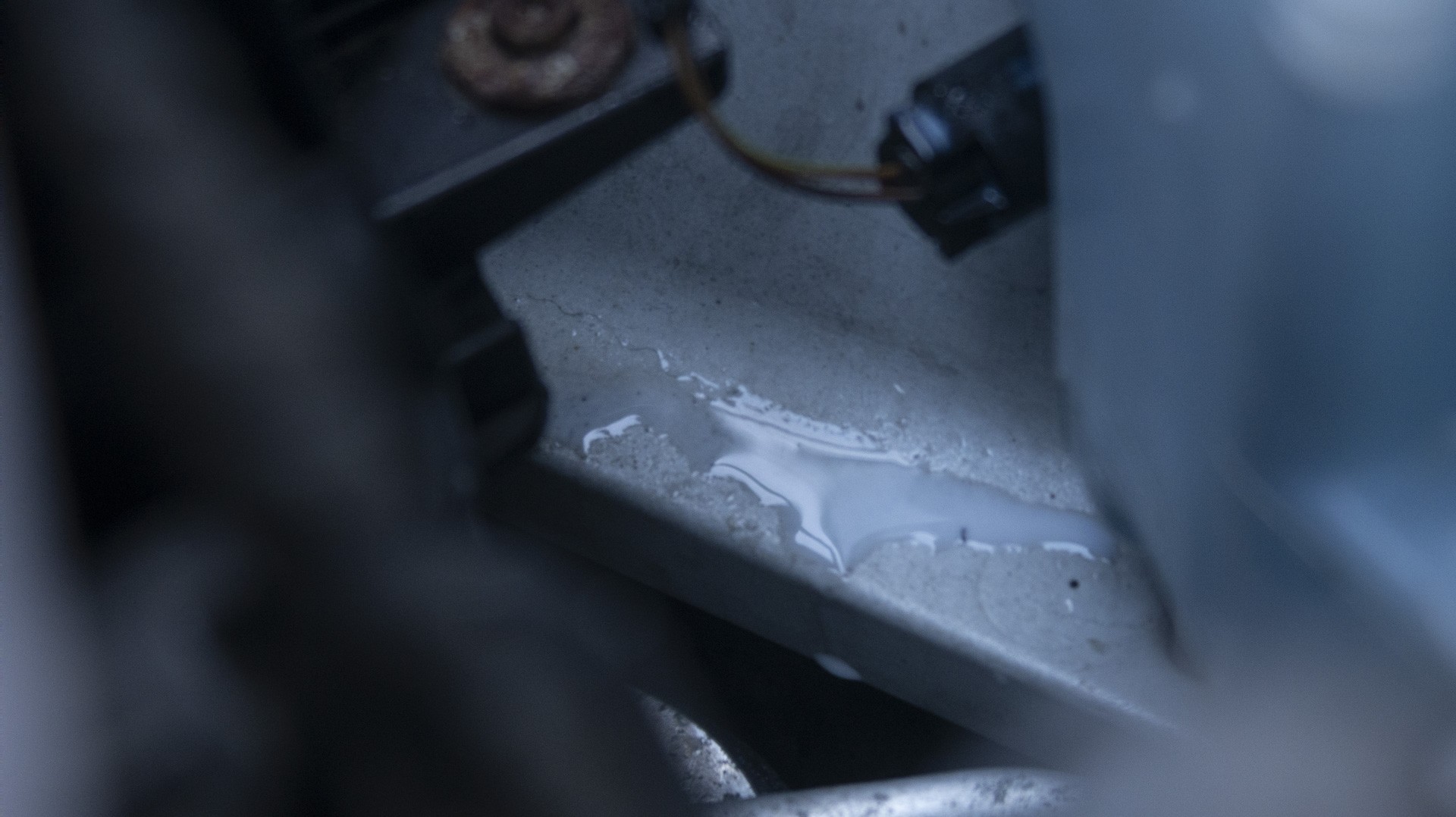

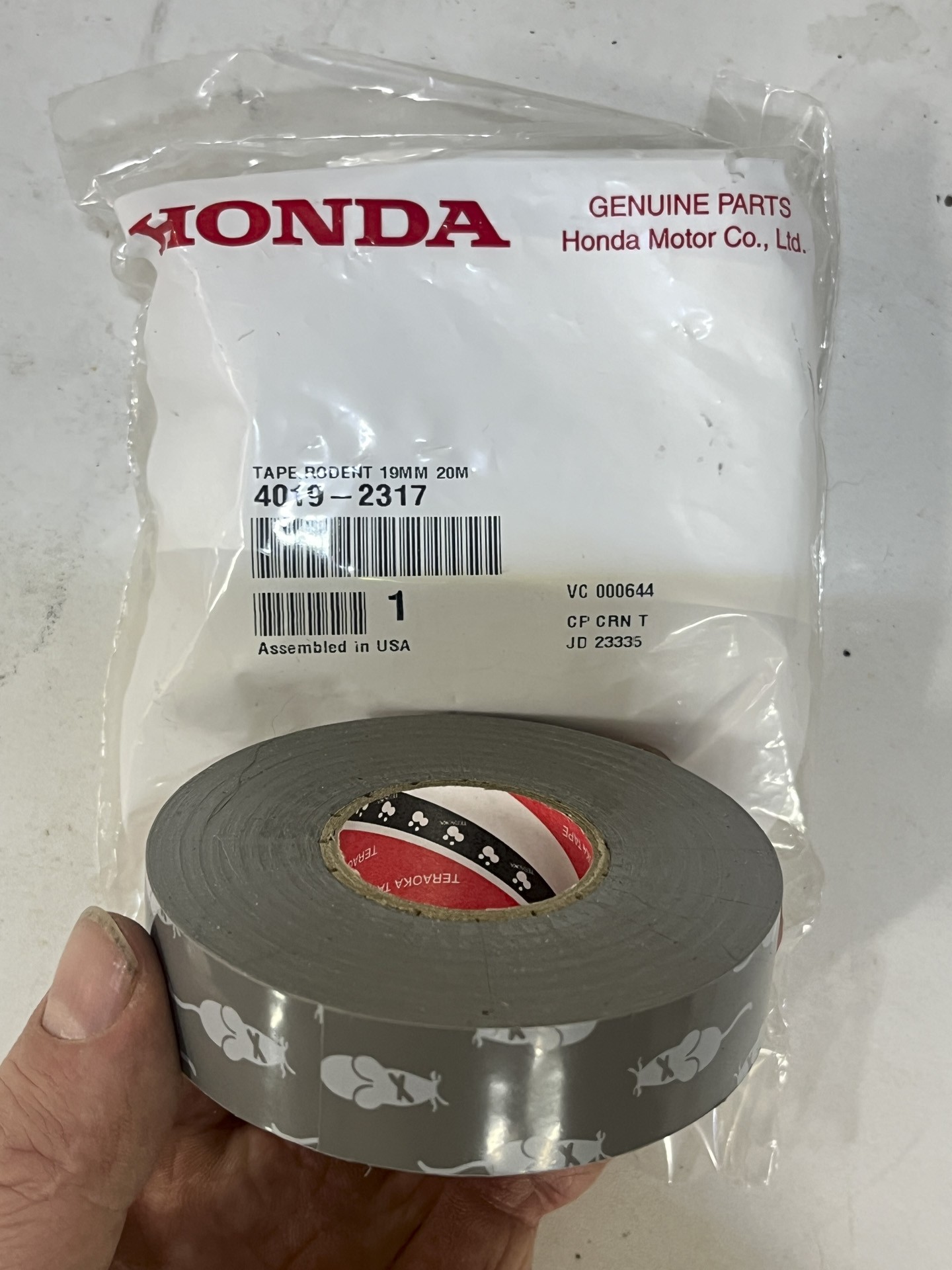
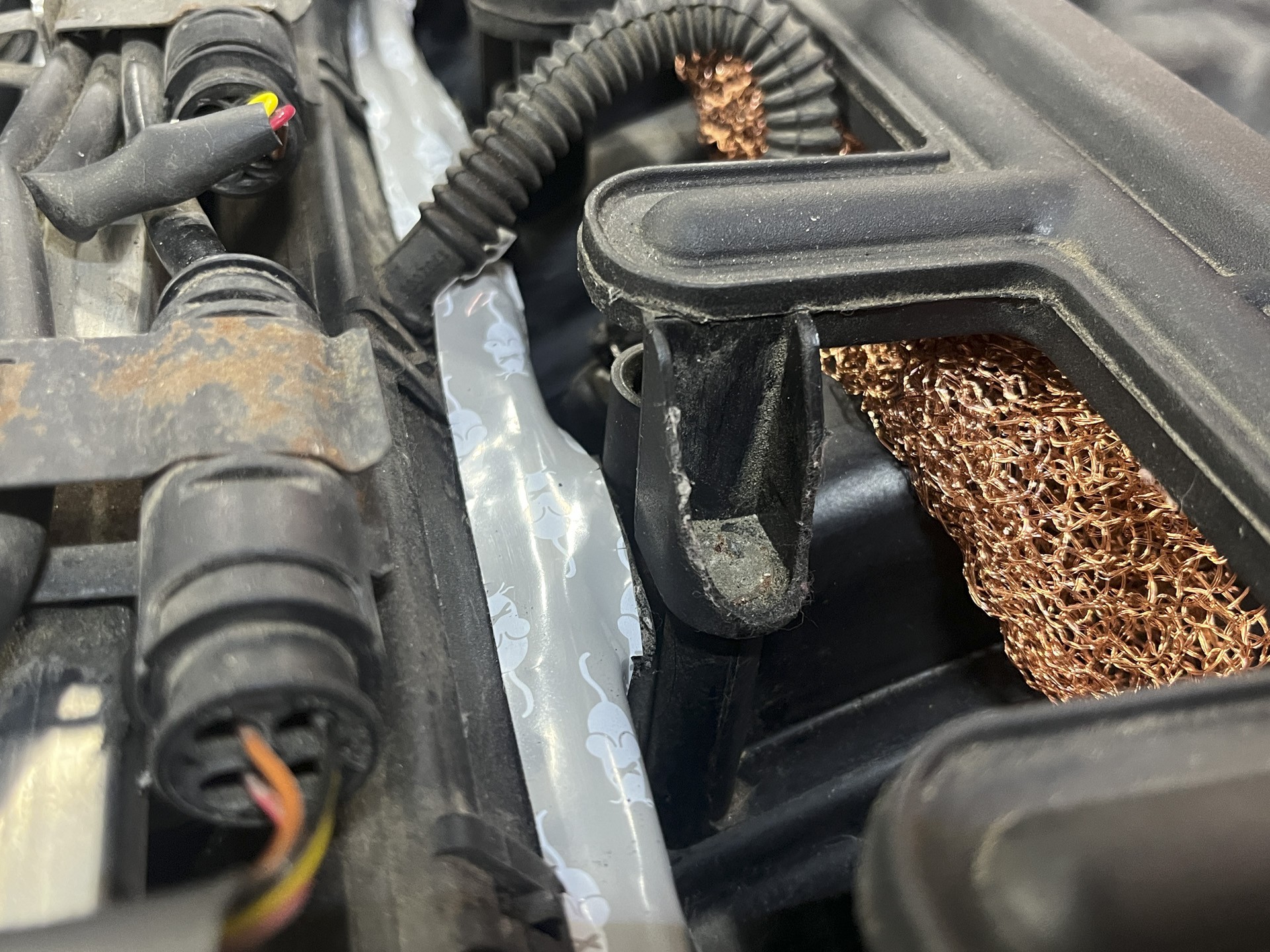
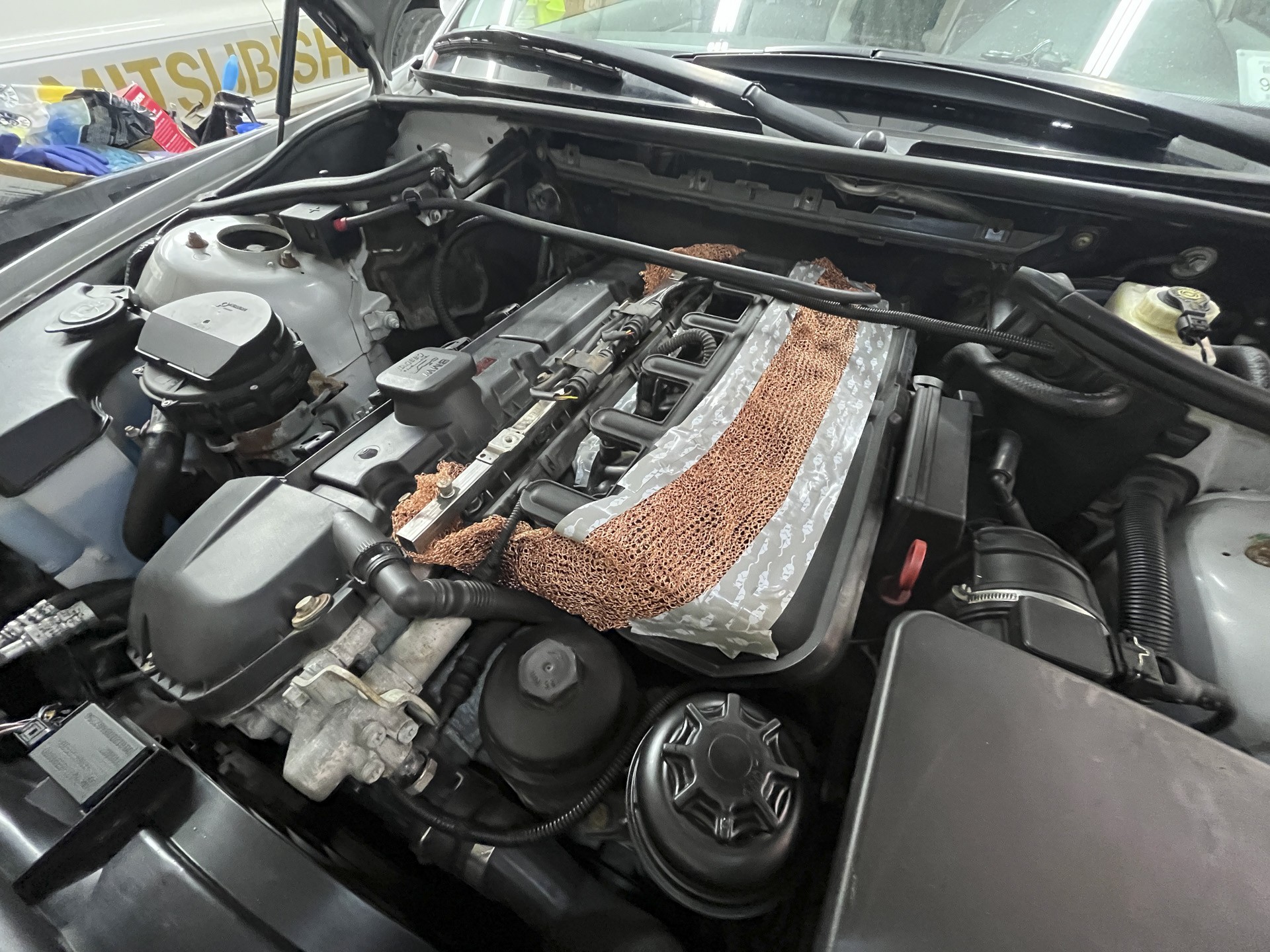
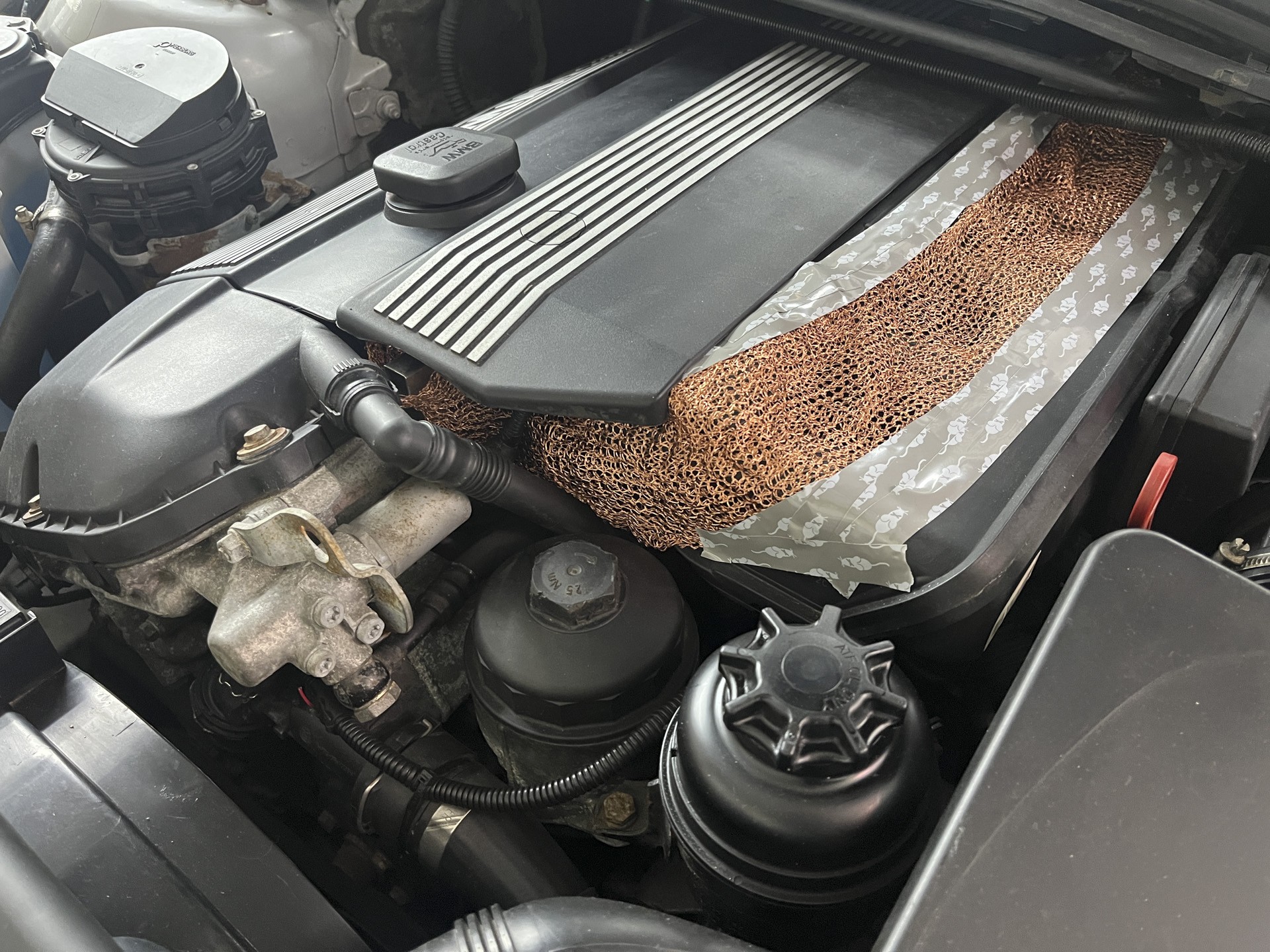
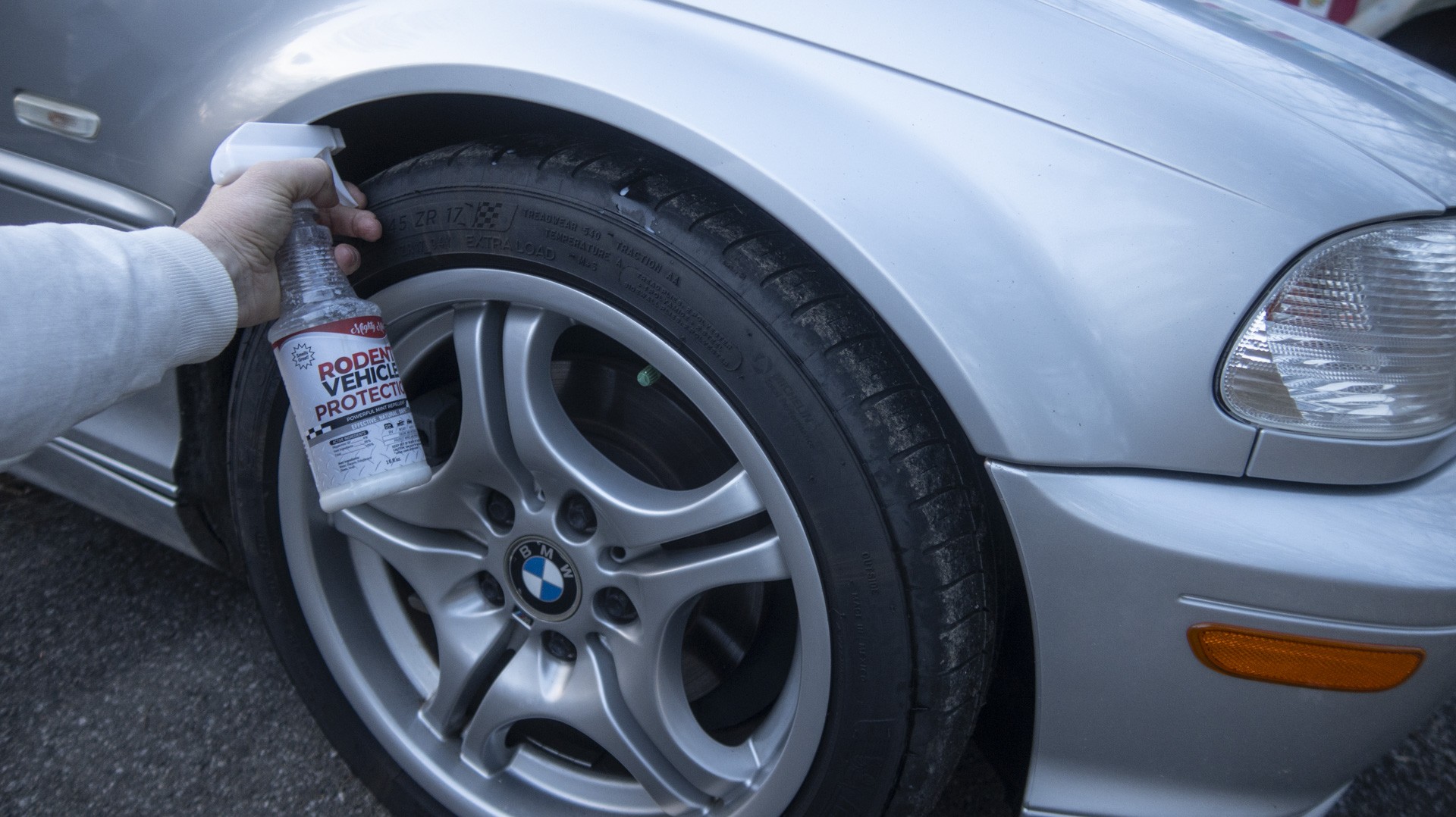
21. Emerging Technologies in Rodent Control
Innovative technologies are continuously emerging in the field of rodent control.
21.1. Smart Traps
Smart traps use sensors and connectivity to monitor and report on mouse activity, allowing for more efficient trapping.
21.2. AI-Powered Deterrents
AI-powered deterrents use machine learning to adapt to mouse behavior and optimize repellent strategies.
21.3. Gene Editing
Gene editing technologies are being explored to develop more effective and humane methods of rodent control.
21.4. Nanotechnology
Nanotechnology is being used to create more effective and long-lasting repellents.
21.5. Drone Surveillance
Drones can be used to survey large areas for signs of mouse activity, allowing for targeted control efforts.
22. The Importance of Regular Vehicle Inspections
Regular vehicle inspections are crucial for detecting and preventing mouse infestations.
22.1. Visual Checks
Conduct visual checks of the engine bay, interior, and undercarriage for signs of mice.
22.2. Professional Inspections
Have your car professionally inspected for rodent damage during routine maintenance.
22.3. Early Detection
Early detection of mouse infestations can prevent extensive damage and costly repairs.
22.4. Preventative Measures
Use inspections as an opportunity to implement preventative measures like sealing entry points and applying repellents.
22.5. Documentation
Document all inspections and any signs of mouse activity to track the effectiveness of your control strategies.
23. DIY vs. Professional Mouse Control: Making the Right Choice
Deciding between DIY and professional mouse control depends on the severity of the infestation and your comfort level.
23.1. DIY Advantages
DIY mouse control is cost-effective and allows you to implement preventative measures yourself.
23.2. DIY Disadvantages
DIY methods may not be effective for severe infestations and can be time-consuming.
23.3. Professional Advantages
Professional pest control services offer effective solutions and can address complex infestations.
23.4. Professional Disadvantages
Professional services can be expensive and may involve the use of chemicals.
23.5. Decision Factors
Consider the severity of the infestation, your budget, and your comfort level when deciding between DIY and professional mouse control.
24. Community Involvement in Rodent Control
Community involvement can play a significant role in rodent control, especially in urban areas.
24.1. Neighborhood Watch
Organize a neighborhood watch program to monitor for signs of mouse activity.
24.2. Shared Resources
Share resources and information on effective mouse control strategies with your neighbors.
24.3. Community Cleanups
Organize community cleanups to remove potential food sources and nesting sites for mice.
24.4. Educational Programs
Conduct educational programs to raise awareness about rodent control.
24.5. Collaborative Efforts
Collaborate with local authorities and pest control professionals to address rodent problems in your community.
25. Frequently Asked Questions (FAQs) About Keeping Mice Out of Your Car
| Question | Answer |
|---|---|
| What attracts mice to cars? | Mice are attracted to cars for shelter, warmth, and food sources. |
| How can I tell if I have mice in my car? | Look for droppings, nests, chewed wires, strange noises, and unpleasant odors. |
| What are some natural ways to deter mice from my car? | Use peppermint oil, mothballs, bay leaves, or cayenne pepper. |
| How do ultrasonic mouse repellents work? | Ultrasonic repellents emit high-frequency sounds that are unpleasant to mice. |
| What are some physical barriers I can use to keep mice out of my car? | Seal entry points with steel wool, use wire mesh, and use a car cover. |
| How do I clean up after a mouse infestation in my car? | Vacuum the car’s interior, disinfect surfaces, and use an air purifier. |
| Should I call a professional pest control service? | Call a professional for severe infestations, persistent problems, or extensive damage. |
| Does car insurance cover damage caused by mice? | Comprehensive car insurance policies typically cover damage caused by rodents. |
| What are some common myths about mouse control? | Myths include cheese being the best bait, one mouse meaning only one mouse, and ultrasonic devices always working. |
| How can I make my garage less attractive to mice? | Keep your garage clean, store food in airtight containers, and seal entry points. |
| What role does climate play in mouse activity? | Mice seek shelter indoors during cold weather, making cars and garages prime targets. |
| Are there any new technologies in rodent control? | Yes, including smart traps, AI-powered deterrents, and gene editing. |
| How important are regular vehicle inspections for preventing infestations? | Regular inspections are crucial for detecting and preventing mouse infestations early. |
| Is DIY or professional mouse control better? | It depends on the severity of the infestation, budget, and comfort level. |
| How can my community get involved in rodent control? | Organize neighborhood watches, share resources, and conduct community cleanups. |
Protecting your car from mice requires vigilance, preventative measures, and prompt action. By understanding the threat, implementing effective strategies, and seeking professional help when needed, you can keep your vehicle safe from these unwanted pests. For more detailed information and expert advice, visit CARS.EDU.VN.
Don’t let mice damage your valuable vehicle. Take control today by implementing these proven strategies. For expert guidance and comprehensive solutions, visit CARS.EDU.VN.
Address: 456 Auto Drive, Anytown, CA 90210, United States
Whatsapp: +1 555-123-4567
Website: CARS.EDU.VN
Ensure the longevity and integrity of your car. Visit CARS.EDU.VN now for more information on pest control, maintenance tips, and reliable car services.
Protect your vehicle from rodent damage by taking proactive measures. CARS.EDU.VN offers comprehensive solutions and insights to keep your car in top condition.
Discover expert advice and reliable car services at CARS.EDU.VN. Don’t let mice compromise your car’s performance and value.
Keep your car rodent-free with effective repellents and maintenance tips. Visit CARS.EDU.VN for all your automotive needs.
Protect your car with quality services and comprehensive guides available at CARS.EDU.VN. Ensure your vehicle remains in excellent condition.
Explore a wide range of automotive solutions and expert advice at CARS.EDU.VN. Secure your vehicle against rodent damage today.
Benefit from CARS.EDU.VN’s extensive resources and dedicated support. Discover how to keep your car in optimal condition.
Access professional insights and valuable resources at CARS.EDU.VN. Protect your car from the harmful effects of rodent infestations.
Rely on CARS.EDU.VN for trustworthy guidance and effective car maintenance strategies. Don’t let rodents take a toll on your vehicle.
Find the solutions you need to safeguard your car at CARS.EDU.VN. Discover essential tips and expert services for a long-lasting and reliable vehicle.
Protect your car from rodent damage and ensure peak performance with CARS.EDU.VN’s specialized services.
Ensure the longevity of your vehicle with expert advice and solutions from cars.edu.vn. Protect it from the harmful effects of mice.